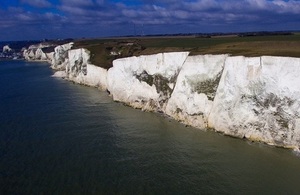Chief Inspector publishes his report on Border Force operations at south coast seaports
This inspection examined Border Force operations at the seaports of Dover, Newhaven, Portsmouth, Southampton, Poole and Plymouth, and the coverage of smaller ports, harbours and marinas along the south coast.

This inspection examined the efficiency and effectiveness of Border Force immigration and customs operations at the seaports of Dover, Newhaven, Portsmouth, Southampton, Poole and Plymouth, and looked at its coverage of smaller ports, harbours and marinas along the south coast between Dover and Falmouth. Evidence gathering took place between January and April, and my report was sent to the Home Secretary on 20 June 2018. Despite the delay, I have no reason to think that my findings and recommendations are not still valid.
The focus was on Border Force’s strategy, capabilities, and understanding of and overall response to threats to the border, including its collection and use of intelligence and its collaborations with others, and on what changes or improvements had been made since my inspections of General Maritime (GM) in 2016 and east coast seaports in 2017.
I looked again for evidence of displacement of clandestine arrivals from Dover to other ports following the closure of migrant camps and improved security in northern France. The numbers discovered at Portsmouth and Poole had indeed increased, suggesting that irregular migrants looking to enter the UK were now targeting the ferry ports in Normandy and Spain. Meanwhile, efforts by European authorities, encouraged and supported by Border Force, appeared to have reduced the overall numbers successfully boarding UK-bound ferries.
The east coast inspection contrasted the broadly efficient and effective management of fixed immigration control points and freight arrivals at the major seaports with the poor coverage of smaller ports, harbours and marinas. The south coast inspection again showed the scale of Border Force’s task. It was clear that it had put considerable effort into improving its coverage, through coastal patrols and more field intelligence work, and with some success.
But, this was a “work in progress”, with much more to be done, particularly in freeing up officers to attend GM arrivals, and in effectively harnessing the “eyes and ears” of harbour masters, marina managers, the maritime and pleasure boating communities, and the general public to report unusual and suspicious activities along the south coast.
I made 7 recommendations for improvement, covering resourcing, equipment, the response to threats, clandestine arrivals, customers and stakeholders, GM, and the tracking of recommendations. Most have been “Partially accepted”, although the accompanying responses, including to the “Accepted” recommendations, are heavily caveated.
I recognise that Border Force is dealing with many challenges, not just along the south coast, but nationally, and that its job is not made any easier by having to prepare for the UK’s exit from the EU without clarity as yet about what exactly this will involve. However, it is difficult to escape the impression that Border Force believes it knows best and will make changes only on its own terms and at its own pace.
During 2019-20, I had planned to complete my series of seaport and coastline inspections with an inspection of the west coast. The responses to the south coast seaports inspection, and the timescales quoted, suggest that I may need to rethink this.
An inspection of Border Force operations at south coast seaports
The Home Office response to the South Coast Seaports inspection
David Bolt
Independent Chief Inspector of Borders and Immigration